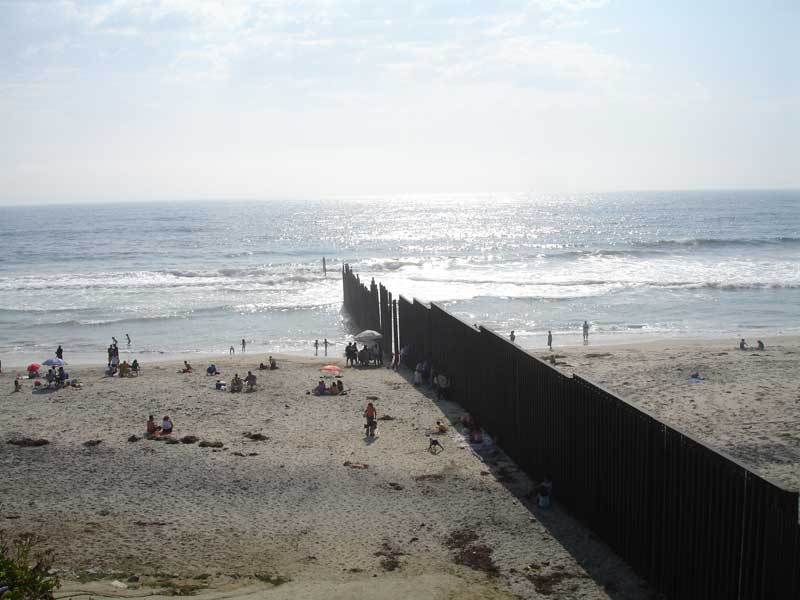Several weeks ago the U.S. Senate managed to overcome all odds and agree on a bill to address the so-called “immigration problem.” To accomplish this they had to agree not only to hire an additional 20,000 border police but to build 700 miles of fence along the U.S.-Mexico border. That would be 700 miles in addition to the approximately 350 miles of fence that begin at the shore’s edge in Tijuana (see above) and extend to the east. Of course, the U.S.-Mexico border is approximately 1,950 miles long, so you can see the problem; then again, when we add 20,000 more border police to the approximately 21,000 we already have we will be able to station one officer every 1,000 feet along the border—a human fence, as it were— so maybe things will work out (although, as far as I know, no one has addressed the question of how far west into the Pacific Ocean we will be able to station border guards).
Of course all of this assumes that walls and fences work to keep things out (or is it to keep things in?, it’s always hard to know which way the structure works). And therein lies the rub, for whether they are designed to contain or exclude, it is pretty clear that they also exist to be breached. They might make it hard to get from side A to side B (or visa versa) but their very presence marks the desire to do so. And more, however high and sturdy a wall or fence might be, it always has to answer to the test of time, crumbling and falling apart, leaving holes large and small that encourage and enable their breach. I was reminded of this recently by a photograph that shows a man sneaking through the Old City Wall in Jerusalem.
The wall is pretty substantial, and yet what the photograph emphasizes is its inevitable fallibility. But there is more. According to the caption the man is Muslim. Whether he is sneaking in or sneaking out is not all that clear, but the irony is pronounced: the wall itself was built in the 16th Century by a Muslim Sultan with the intent of protecting the interests of the Ottoman Empire, i.e., keeping non-Muslims out. Of course, today, and so many years later, the wall serves a diametrically opposed set of interests.
And so, to return to the photograph of the fence that separates the US-Mexico Border, one has to wonder how successful it will be in containing and excluding whatever it is that it is supposed to contain or exclude. Or even how successful it can be given all of the constraints it must weather? And for how long? And most importantly, perhaps, whose interests might it serve, both now and in the future? Artificial borders like fences and walls, it seems, know no permanent masters other than time and that should give us pause when we commit ourselves to building them, for what today serves to fence out may one day serve to imprison.
Photo Credit: James Reyes; Abir Sultan/EPA. The title for the post is from Robert Frost’s “Mending Wall.”


Discussion